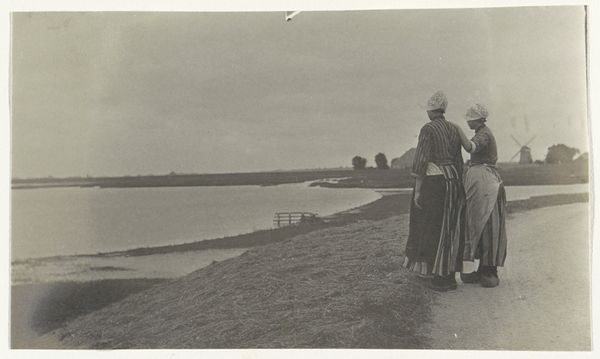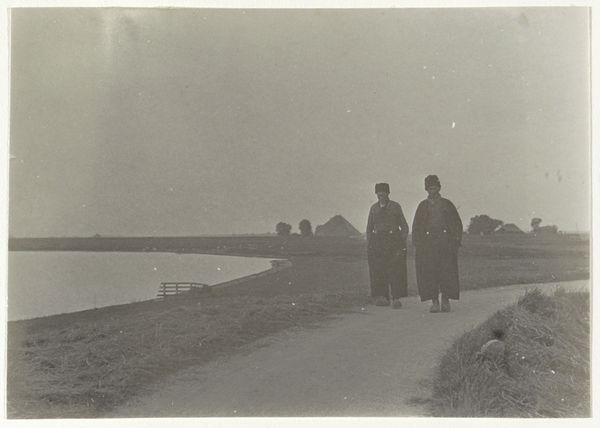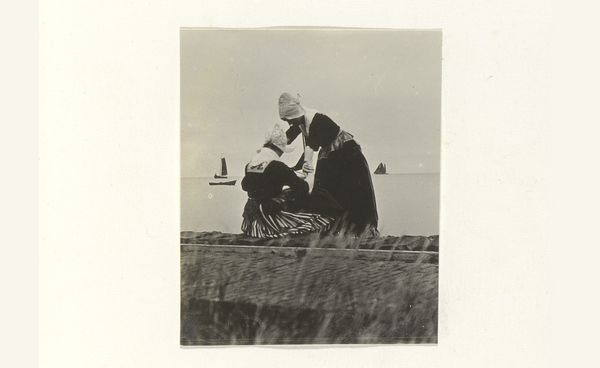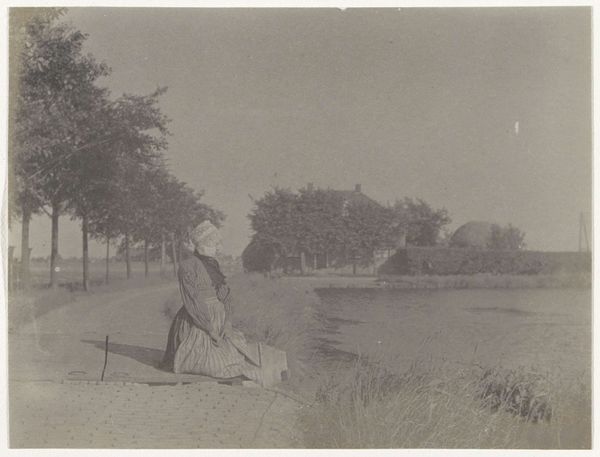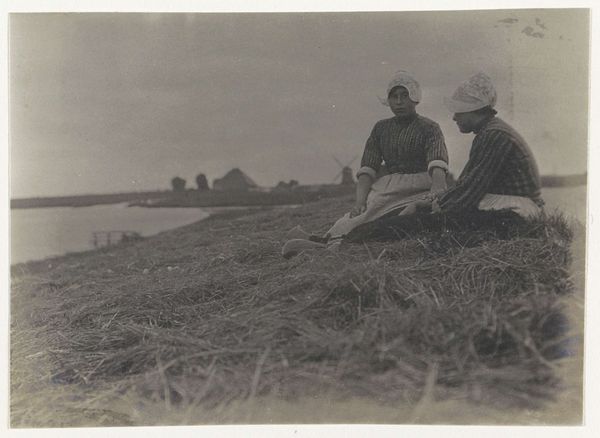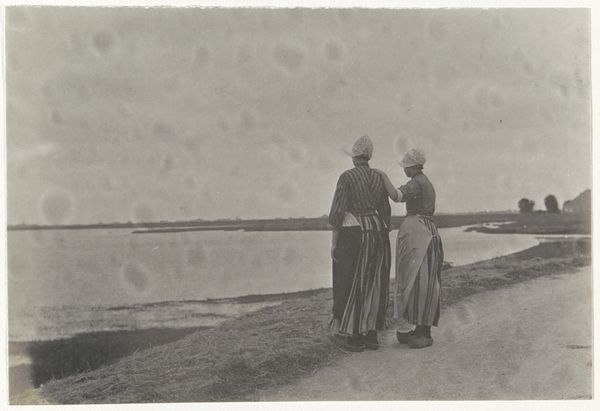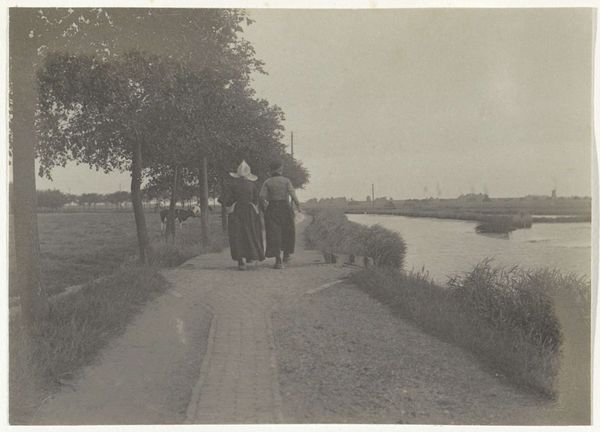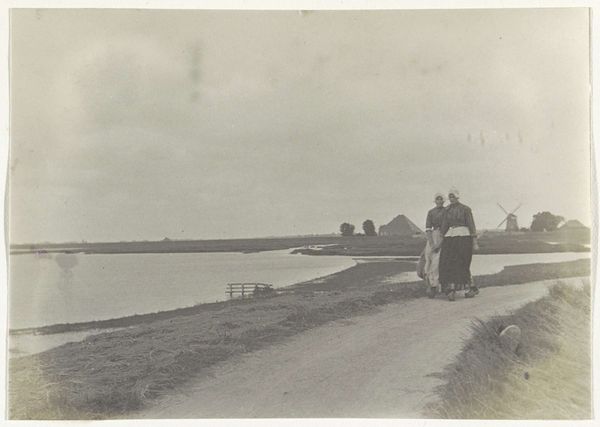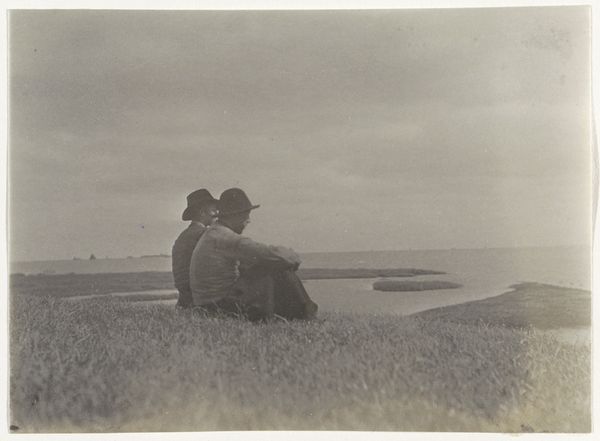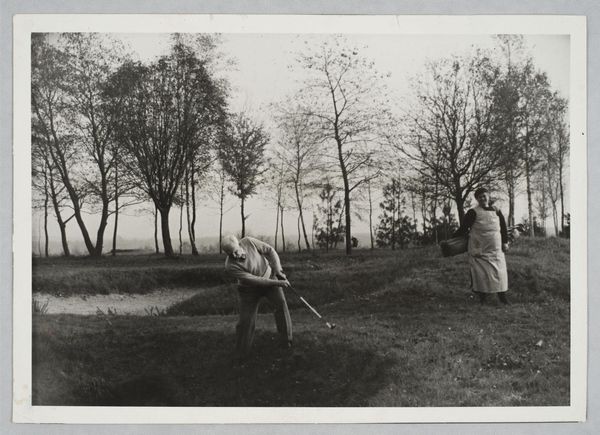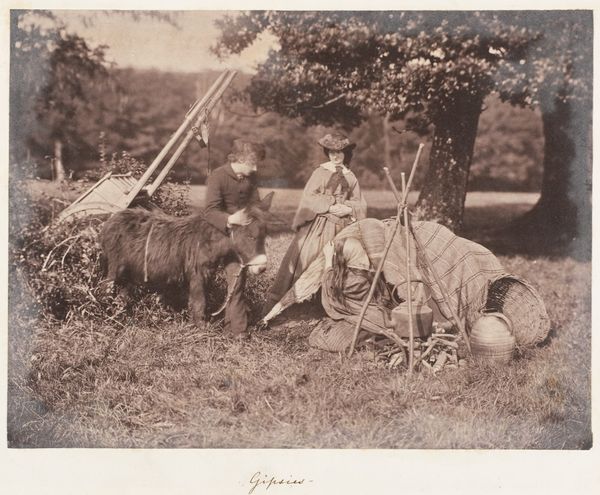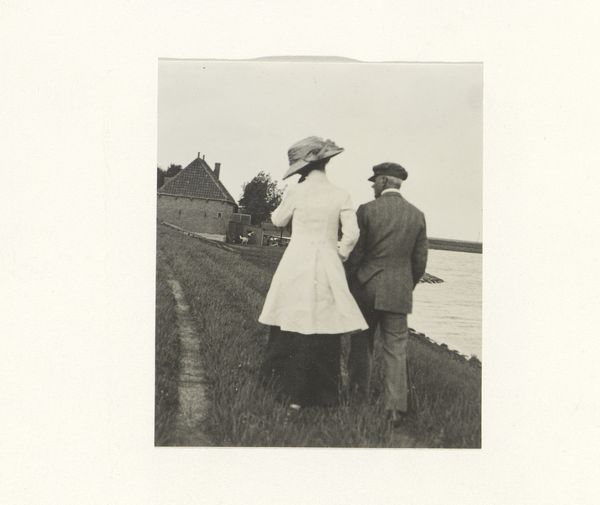
#
competition photography
#
photo restoration
#
wedding photography
#
outdoor photograph
#
outdoor photo
#
outdoor loving
#
couple photography
#
holiday photography
#
outdoor activity
#
celebration photography
Dimensions: height 65 mm, width 96 mm
Copyright: Rijks Museum: Open Domain
Curator: At first glance, the photograph has an air of quiet nostalgia. There’s something so still and contemplative about it. Editor: Indeed. This photogravure, dating roughly from 1900 to 1910, titled “Twee vrouwen in Volendamse klederdracht liggend op een dijk” depicts two women in traditional Volendam clothing, resting on a dike. The work of G. Hidderley captures a scene steeped in Dutch cultural identity. Curator: The attire immediately suggests tradition and perhaps the weight of cultural expectations. The bonnets, in particular, appear almost like halos, adding an unexpected spiritual dimension to a seemingly simple pastoral scene. I find the landscape in the background almost feels as though it’s holding them captive somehow. Editor: An intriguing take! I would add that it’s crucial to note how such imagery became symbolic during a time when regional identities were being both celebrated and subtly commodified through tourism and nationalist sentiments. The image would have catered to certain romantic notions of rural life while potentially obscuring the realities of these women's existence. Curator: Do you see it as an idealized representation, then? I agree there’s an inherent artificiality. Consider how deliberately posed they appear amidst a rather wild landscape. This controlled serenity hints at performance. It speaks of how identity becomes a spectacle. Editor: Precisely. The windmills in the background, though a classic Dutch image, become almost like stage props, reinforcing this staged sense of authenticity. The public’s imagination was hungry for imagery like this, and photographers like Hidderley were happy to oblige and capitalize. Curator: And it makes me wonder how these women perceived themselves. Did they consciously participate in perpetuating a specific cultural narrative, or were they merely embodying the roles assigned to them by society? It's a complex intersection of personal identity and cultural representation. Editor: An absolutely pivotal observation. Photographs like these not only mirrored but also shaped public perceptions, creating a feedback loop that impacted how Volendam, and other similar regions, presented themselves to the world, thus turning heritage into performance. Curator: Thinking about the enduring power of images…it’s fascinating to realize how this single photograph, through its blend of tradition, setting, and presentation, carries layers of social, cultural, and even psychological meaning that continue to resonate with us today. Editor: It reminds us that art often participates actively in shaping collective memories and societal constructs, not just in reflecting them. So, it makes the image less of a candid one and instead reveals it to be another complex form of political storytelling.
Comments
No comments
Be the first to comment and join the conversation on the ultimate creative platform.
